ABINGDON SOARS
The Smorthwaites of the KZN Midlands – triumphant in food and wine
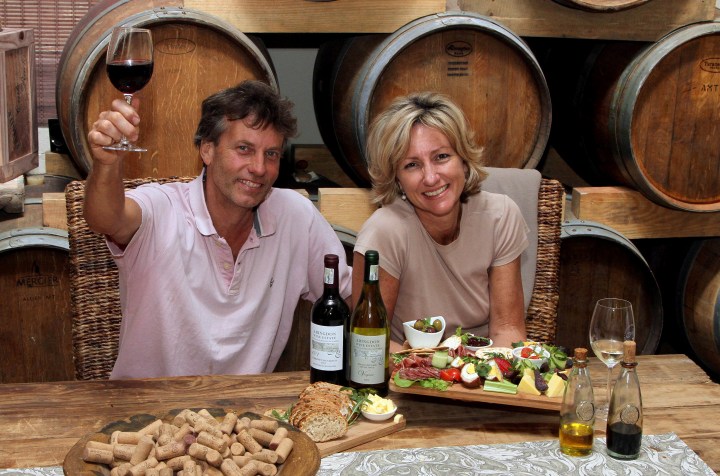
Abingdon Estate in the KwaZulu-Natal Midlands has been in the news lately. ERICA PLATTER reports from the food side, JOHN PLATTER on the wine.
Eating…
It was midnight in Singapore and the food stalls on Bugis Street were pumping. Jane Foulis tucked into her deep-fried squid heads, with a Tiger beer on the side. She and a group of girl friends were winding down after an evening’s performance of excerpts from Giselle/Swan Lake/The Nutcracker/ – she cannot now remember. After all, it has some years ago that she graduated from dance classes with teacher Eileen Keegan in Kloof, where she also went to primary and high school, joined Napac, and then took a soaring leap to dance and tour internationally with the London Festival Ballet.
The bevy of ballerinas became, predictably, a magnet for interested parties. Among them Ian Smorthwaite, an oil-industry engineer based in Singapore, who invited them to go water-skiing on his boat.
“It was the beginning of the end,” says Jane. “I knew I was going to marry him.”
She missed the plane carrying the ballet back to Britain, knowing it would mean the breaking of her contract and the loss of her Equity performers’ card. Not knowing – well, who would ever have thought or even wildly imagined? – that one day she’d be front-of-house, back-of-kitchen, running-the-show, tempura-battering prawns at the family’s Abingdon Food and Wine Bar back in her home province of KwaZulu-Natal.
AND winning the Best Kept Secret title in the 2020 American Express Restaurant Awards.
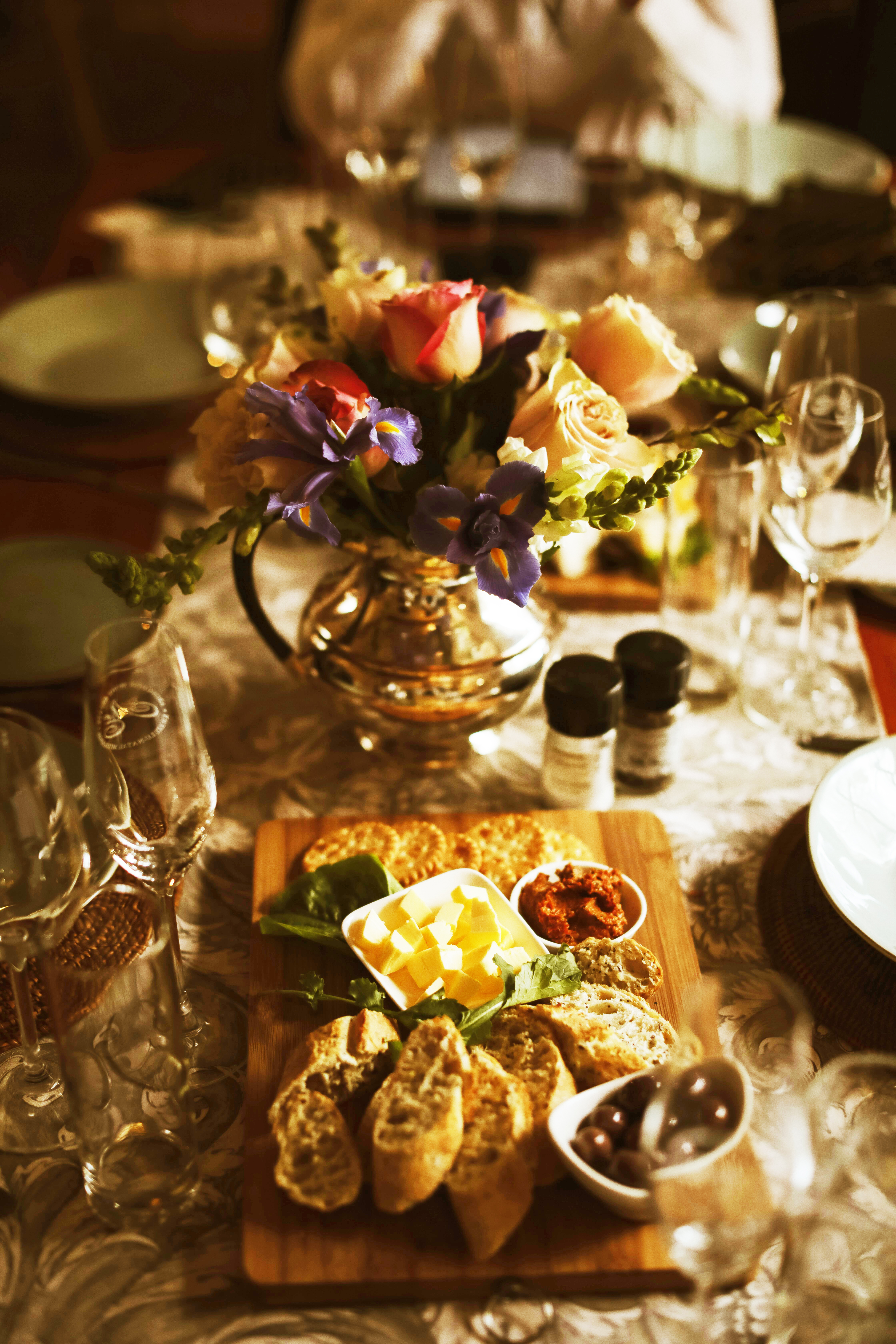
A table spread with delightful (and now award-winning) things to eat, at Abingdon Food and Wine Bar. Photo: Supplied
But this is like watching a TV series backwards. It could easily make one, such is the adventure of the Smorthwaites’ family history.
But let us begin in Singapore. Jane, now out of a job, did what came most naturally: her own thing. She established the Singapore Ballet Academy. And, always interested in food, began to pick up an Asian repertoire. “It was a year in paradise.” Then Ian was posted to Jakarta, where – of course – Jane founded the Indonesian Ballet Academy, underlining her preference for “teaching rather than performing”, and gathering more exotic recipes and cooking experience.
Deciding against the next proposed posting, Syria, they headed to Joburg, where a chance meeting with a friend of Sol Kerzner launched their next venture. Sol called Jane his “I can do it girl”. Whatever décor and furnishing items he dreamed up for his next fantastic hotel, the Smorthwaites would find, in Java, Thailand, Bali, wherever – their Asian contacts were invaluable. They supplied top interior decorators and stores such as Wetherlys for 22 years and continued to do so after moving to the KZN Midlands. Daughter and son Laurie and Hadley had won scholarships to St Anne’s and Michaelhouse, and the import business could be run from anywhere – so why not from a smallholding at Lions River, halfway between the two schools so the children could become weekly boarders?
This would also solve the problem that while a décor company was absolutely Jane’s thing, it wasn’t Ian’s. It turned out that the usual sort of faming in this area wasn’t, either. When he proposed planting a vineyard (“ridiculous!”), she was initially horrified, then gave in. “It was going to make him happy.” But, with a worldwide, never mind Cape, wine glut, food had to become part of the package. They would open a little restaurant and sell their wine with food, on the premises.

Dining al fresco at Abingdon. Photo: Supplied
It was a sensible and successful plan, except for the high turnover of chefs. And Jane saw with dismay that too much food was returning to the kitchen. She decided the menu was wrong – “Meat and three veg, I hated it. It’s not who I am. I’m a nibbler. I like little plates. So I went into the kitchen. And we changed the menu. This is me! This is us!”
And this is what brought chief Amex judge Steve Seinfeld back to Abingdon for three successive lunches. Jane recalls that he remarked how quiet Saturdays were at other places, “yet we had this massive vibe going on, we were pumping”. He sampled everything, from the harvest boards of local charcuterie, cheeses and home-made bread (brilliant for sharing) to the tapas bowls – meat, veg, fish. All the bowls have delicious Asian-Jane touches, such as deep-fried shredded ginger, and inventive dipping sauces; gourmet special ingredients such as truffle dust and white anchovies; and hearty favourites like pork belly served small but (happiness!) with no skimping on Jane’s justifiably famous crackling.
It is such an all-round appealing and manageable menu. Exciting but not too challenging. Bold but not silly. Absolutely right with the Abingdon wines. And all made in the kitchen by Jane herself, using as many local ingredients as possible: the trout from Bushman’s River near Underberg; the Cheddar from Kamberg; the meat from Merrivale Butchery. Gourmet flourishes are added from chef and friend Constantijn Hahndiek, of Sagra Foods, whom Jane first met when he cheffed at nearby Hartford House, and who often does off-menu food “events” with her.
When a table of regulars from Maritzburg called Jane over to tell her: “We’ve been coming here for 10 years and you’ve never ever disappointed us,” Steve Seinfeld at the next table must surely have overheard. And seen. “Nothing goes back, these days!”
The original tasting room with a few tables has been transformed and enlarged by incorporating their previous furniture and décor showroom. It opens out through superb old sash windows to a quintessentially green and rolling Midlands view, and is filled with comfortable cane chairs, old teak and mahogany tables and a broad, three-sided tasting bar where waitress Nompilo Zuma deftly makes space for tapas plates amid the glasses.
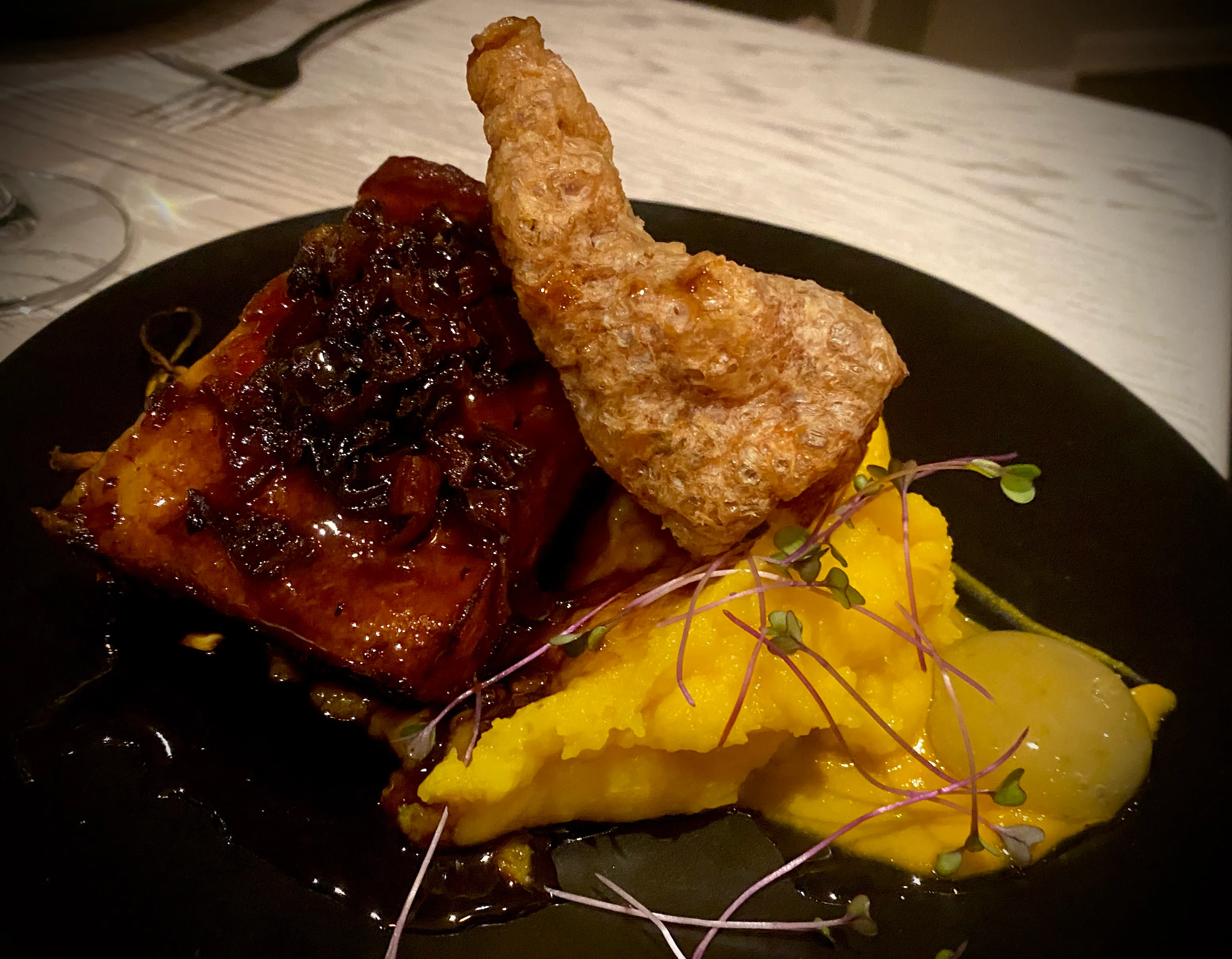
Jane’s Pork Belly. Photo: Supplied
Jane, the eminence blonde, is everywhere, in and out of the kitchen, working, talking, pouring, bantering. (“I kind of do everything.”) Daughter Laurie has inherited all the multitasking gifts. Son Hadley, a CA, smoothly takes over a tasting from his distracted dad. There are three fireplaces. Six rescue dogs. The whole family helps out, pitches in. “Ambience, service, food, wine – that’s our focus,” says Jane.
How have they got all the elements so right? Jane believes their secret is that Abingdon is open only three days a week: Fridays, Saturdays and Sundays (except when closed for a function, and they are hugely in demand for these, anything from a wedding to a wake). “Otherwise you don’t have fun. And if you don’t, it shows.”
She asks: “Does it sound corny to say that our formula is all about a family doing a family thing we all love?”
Then sums up: “Balance is everything.”
How apt is that for a ballerina?
And drinking…
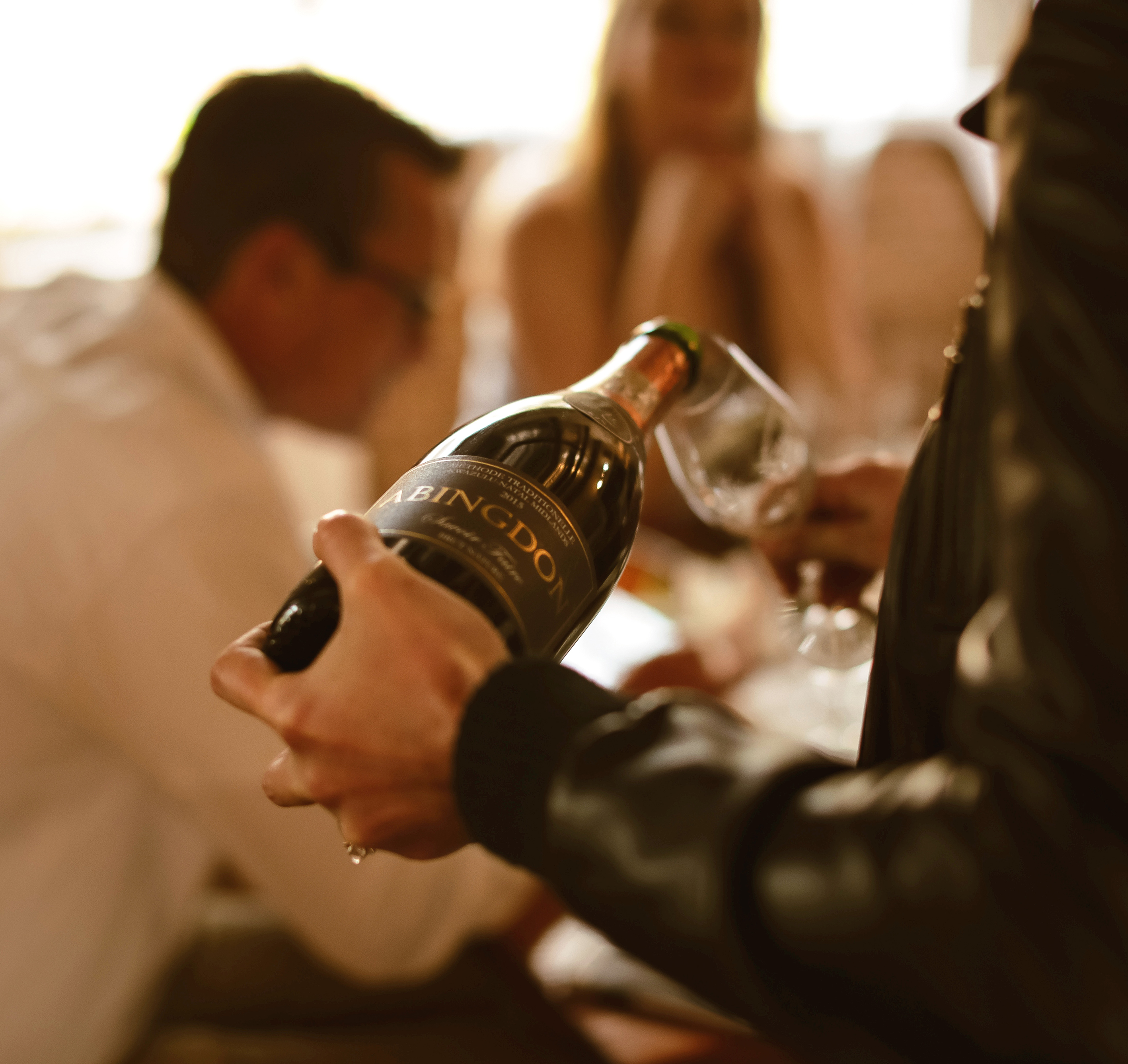
Plenty of fine stuff in a bottle to be had at Abingdon. Photo: Supplied
“You’re living out a dream among your vines, but have you gone a little nuts?”
Ian Smorthwaite doesn’t dignify this with a response. His hardened fingers and dark-rimmed nails dyed by red-wine bottling are cradling a fine-stemmed, thin-rimmed glass of quite magical Abingdon Nebbiolo 2018. He once visited super-premium Bordeaux Chateau Le Pin and the first thing the proprietor said was: “You have the hands of a vigneron” – a you’re-one-of-us nod.
Go easy on the gushing about this Nebbiolo, I tell myself. But it’s a difficult feat, and especially in these high, often cold Midlands, way off the well-trodden viticultural and climate map, a defiant middle-finger to winemaking the easy way.
The Piedmontese Italians own this tricky grape variety – and its wine styles, Barolo, big, slow-maturing, expensive; and Barbaresco, though virtually next door, less portentous, less dear. Both have evolved with the rich, warming, creamy cuisine and culture of Piedmont – like the Drakensberg, porcini territory.
Ian’s baggy jeans are his vineyard overalls, dirty brown at the knees, not much better behind. He spends about four months of the year – two prunings, winter then later in summer – mostly kneeling, but quite often on his back directly underneath, individually shaping his 7,000 vines for the coming harvest. Himself. In the Old World, yes, of course this is how it goes. But I don’t know of any winemaker-proprietors doing this in South Africa.
“My Zulu isn’t strong enough to explain the psychology of the vine,” says Ian. As any vineyardist – like all devotees, a tribe unto themselves – will tell you, pruning is the most therapeutic, creative, dreamy part of the job. A kind of free-form art work framed in serious botanical science. Predicting the vine’s reactions in the coming year after such a severe assault – 90% of the season’s growth is cut away – is the challenge. A working knowledge of fruiting eyes and sunlight onto spurs is critical; almost as useful is knowing how morning infrared and afternoon ultraviolet rays affect grape bunch ripening.
Ian is a chemical engineer with a formidable resumé, consulting for giant international oil companies drilling from rigs, mainly in Asia. He’s now revelling in a private element communing with vines. Occasionally, as he moves on all fours from one vine to the next, he hears the hissing of a snake defending its space.
“Mostly night adders, nothing to worry about,” he says. “It’s the bees that sting without warning, but even they’re no trouble, and we see fewer of them these days, sadly.” No trouble? “I rub the juice of a berry onto the bite and it’s gone in seconds. Must be a very alkaline sting.”
We’ve been nursing the Nebbiolo in the glass for a while. I’ve nosed the wine casually. He has elbows planted emphatically on his own crafted bar counter, fixing me with an interrogatory gaze. The wine’s less tight now, the puckery tannins waning a tad, to use a wine term. And still waiting.

The makings of future fine wine. Photo: Supplied
The fires are crackling, patrons are dribbling in, some to taste at the bar, others taking window tables overlooking another Smorthwaitean experiment, yet to bear fruit – a vineyard of Spanish Tempranillo vines. There’s family milling around, cooking, plating, serving, interrupting, pulling Ian’s leg. They, as the world does, love an iconoclast.
Abingdon is the highest registered wine estate in South Africa growing and bottling its own wines – at 1,140m. Outside on a gloomy and damp day, rows of snow-white netting cover and coddle the vines – protection from birds and hail. It’s November but this could be a bracing winter scene. These are cool-climate vineyards. Chardonnay, Viognier, Sauvignon Blanc, Syrah, Cab, and my magnet, Nebbiolo.
The muddy farm road, rustic wine-bar/restaurant and the hands-on owners all are determinedly unaffected – it couldn’t be more informal. No extravagance. Much inventiveness. Wine glasses are hanging upside-down from old ox-cart yokes. Five-inch nails, rusting a bit, have been hammered in at suitable intervals and bent upwards to stash the glasses safely. Serious savings on shiny stainless steel accoutrement.
Ian has suspended bottling for the day. He’s eager to start “a tasting” discussion, but where: Geology? Chemistry? Physics, Oenology? Barrels? pHs (yawn)? Corks? Malolactic fermentation (ugh)? Nematodes?
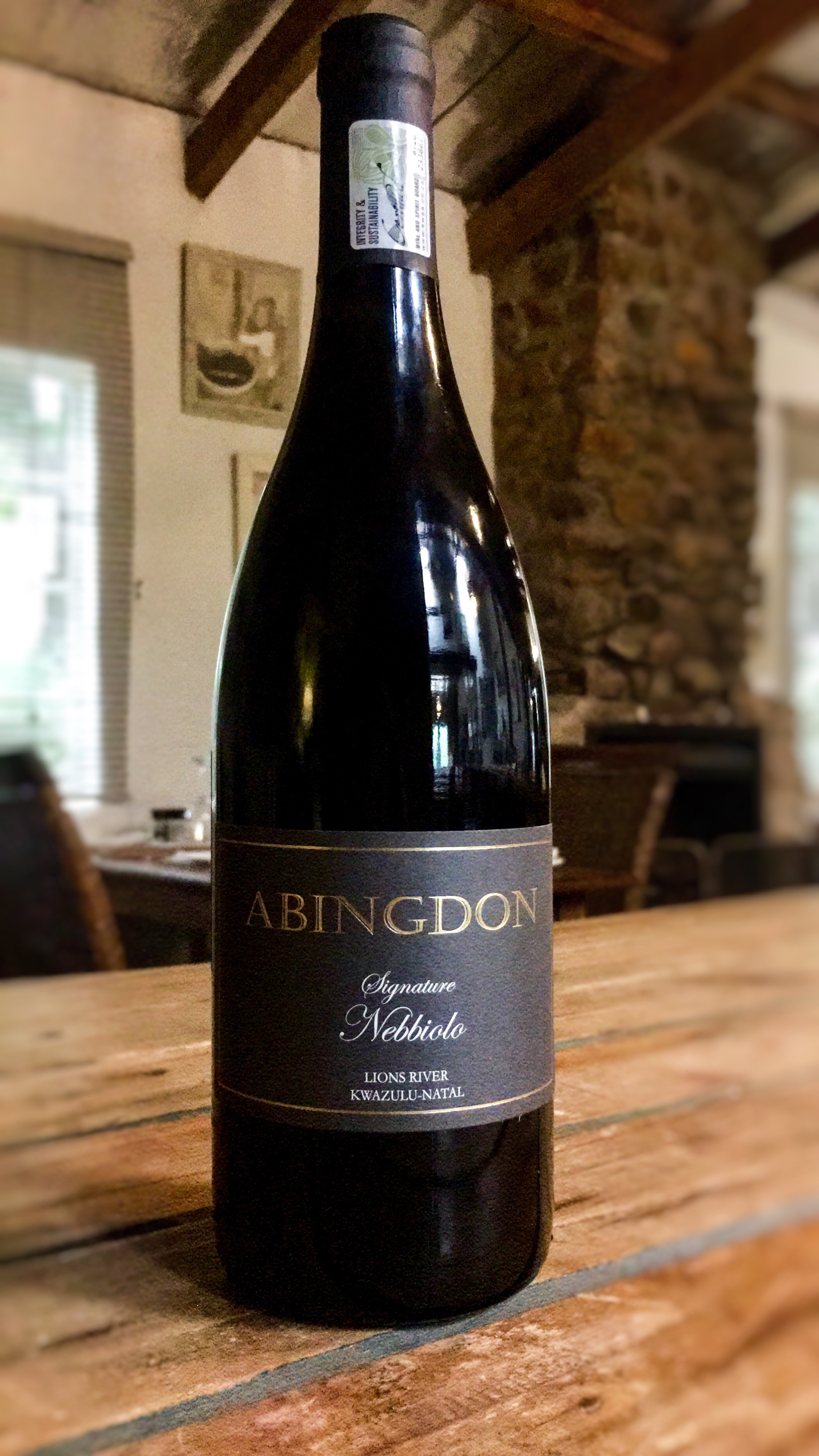
That Nebbiolo. (Before the bottle was opened.) Photo: Supplied
I’m thinking we’ll need only half an hour to get to the other side of a couple of glasses of the Nebbiolo. But Ian flies out of his starter’s box, and we’re in for the long haul – not verbal incontinence exactly, but first off its soil “amendments”. Do I know the difference between calcitic and dolomitic lime? No. And anthocyanin relationships to tannin at harvest and subsequent polymerisation prospects in the wine? Whoa! All critical no doubt, and I wish I knew more, but this is heading into TMI quicksands.
And then he tells me something, and I wonder if this engaging, plausible, civilised, clever, risk-taking, artisanal subversive, who ticks every box, really has both paddles in the water.
The delicious, still too youthfully fresh and firm (it’ll come around beautifully after about five years) limpid-textured, light-hued wine in the glass, free of too-ripe fruit or oaky clumsiness, he announces, is from ungrafted vines!
Most of the world’s vineyards were wiped out 150 years ago by the phylloxera aphid. Today’s wine industry, everywhere but for a few isolated pockets, survives courtesy of grafted vines on American rootstocks. Incredibly, there is still no other real protection.
“I was in a hurry,” says Ian with an impish shrug.
He knows he’ll lose the aphid wars – ultimately. But I sense he also hopes, in his unique location, far from neighbouring vineyards, that he might just beat the impossible odds. Over time and probably too soon, the vines will die. So he has hedged. He’s acquired grafted Nebbiolo stock – and will supplement in future. Meanwhile, he is gaining invaluable experience perfecting this wonderful variety, winning over palates. He made only 404 bottles in 2018.
So I blew my annual quota at one lunch. It struck up a savoury symbiotic contest with salty crackling in what the Americans call “menu dynamics”. At R400 a bottle, it’s a snip, not only for its quality but its originality and the gutsy character of its maker. Not a pompous premium tag. And sold out.
The Smorthwaites’ crowning wine achievement, however, and already perhaps the most famous, is daughter Laurie. Starting her formal wine education in London, with distinctions and flying colours, she came home to establish the KZN School of Wine, teaching the international WSET (Wine & Spirit Education Trust) syllabus to aspiring wine professionals. She’s a graduate (with yet another distinction) from the Michael Fridjhon Wine Judging Academy, and now a judge herself. Earlier in 2019 she won the Moet & Chandon Best Young SA Sommelier competition, scoring among the top three in the world!
Sommeliers are an entirely new breed today and expected to know about far more than wines and pairings. The obligatory smile that allays fine-dining jitters comes first, but just as important is the patience and banter to disarm the booming know-all. Modern somming encompasses a deep knowledge of the 8,000-year plus origins and history of wine and the histories of all wine producing countries, their cultures and cuisines and peoples.
Laurie fits the bill, and more. She has hands-on experience, making the wines – everything between working the vines to all the physical, and chemical, rigours of the winery, filtering, bottling and labelling. Abingdon’s sparkling wines, including the hipster Viognier Pet-Nat, are her special charges. Plus she has been charming buyers, alongside her parents, since knee-height; she towers above them both now.
Now she’s aiming even higher; for the British Master of Wine (MW) title, the most exclusive and exacting qualification in wine. Five years, she’s given herself. Typically Smorthwaitean, she’s planning well ahead. Recently married, she and her husband are deciding whether to have their babies before, during or after the MW event!
And how does she – professionally – describe her dad’s (partly hers, too) Nebbiolo?
“… distinctive pale colour, floral nose and sour cherry on the palate. Matched by firm tannins and savoury leather, tar and truffle in the finish.”
Yes! DM





 Become an Insider
Become an Insider